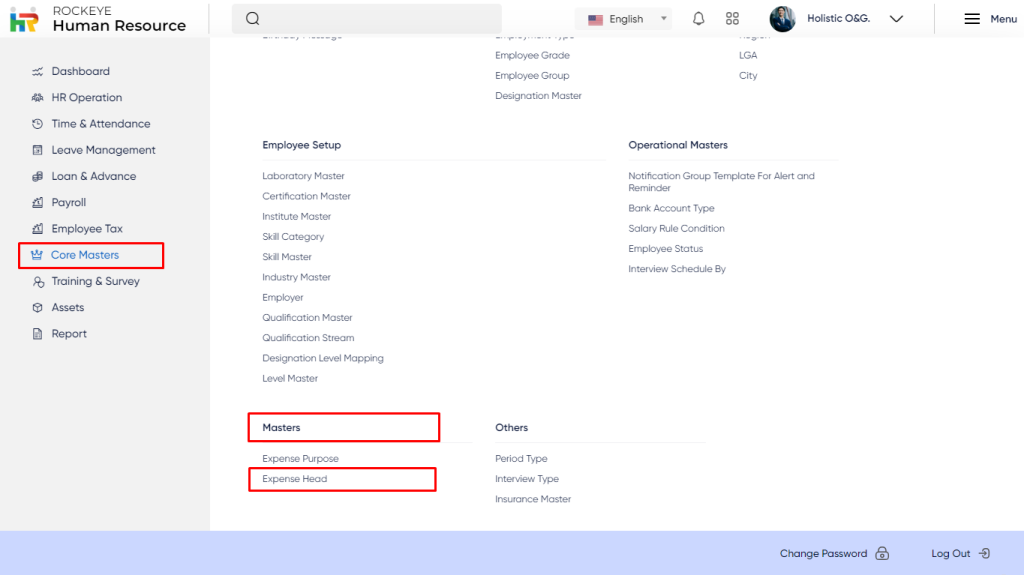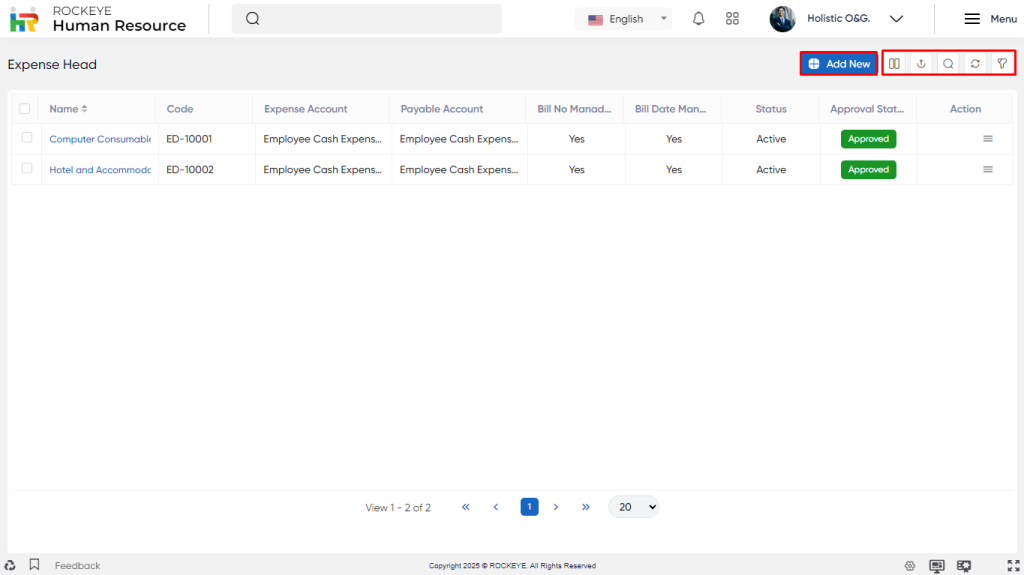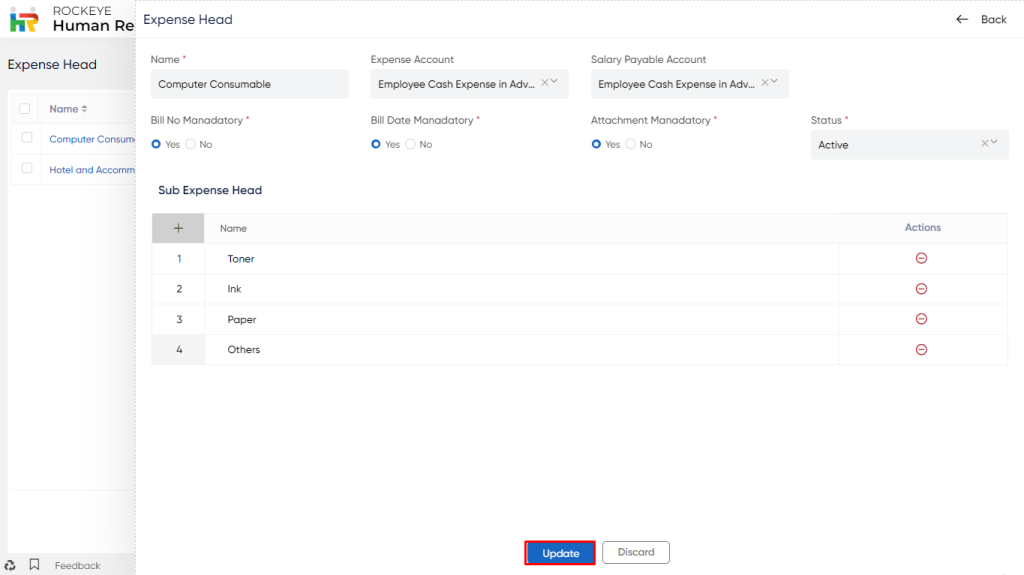Expense Head
Introduction/Purpose:
The Expense Head module in HRMS (Human Resource Management System) is designed to manage and track different expense categories within an organization. It provides a structured framework for categorizing expenses and maintaining relevant information associated with each expense head.
The purpose of the Expense Head module is to facilitate efficient expense tracking, reporting, and analysis. It enables employees to select the appropriate expense head when submitting their expense claims, ensuring accurate classification of expenses.
How To Navigate:
The navigation to a expense head in a HRMS typically involves the following steps:
- Click on the main navigation icon: The main navigation icon located in the top right corner of the screen. Clicking on this icon will open the navigation menu, which typically includes links to various sections of the HRMS system.
- Click on the core master section: The Expense Head is located under the masters section. By clicking on the expense head will display a name, code, expense account, payable account, bill no mandatory, bill date mandatory, status, approval status and action.

Listing:
- Quick Search: This feature allows users to quickly search for specific records or information within a listing. It enables users to enter keywords or criteria to find relevant data efficiently.
- Export: The Export feature allows users to extract data from a system or application and save it in a format that can be used in other programs . It provides options to export data in formats such as Excel, CSV, and PDF in landscape or portable formats.
- Hide and Show Column: This feature allows users to customize the display of columns in a table or listing. Users can choose to hide or show specific columns based on their preferences or the information they need to view, providing a more personalized and streamlined user experience.
- Show all listing records: This feature allows users to display all records or entries in a listing or database at once. It eliminates any pagination limits and shows a comprehensive view of all available data, making it easier to browse through and analyze large datasets.
- Advanced Search: Advanced Search provides users with additional search options and filters to refine their queries and find specific records or information within a system or application. It typically offers more advanced search criteria, such as date ranges, multiple keyboard inputs, or specific field searches.
- Delete Row: This feature allows users to remove a specific row or record from a table or listing. It provides a means to remove unwanted or outdated data, enabling data cleanup and maintenance within the system.
- Pagination: It typically includes navigation links or buttons to move between pages, making it easier to browse and navigate through large datasets without overwhelming the user with all the records at once.

Recording & Update:
The expense head in a core master module is typically includes:
- Name*: The title or label of the expense head (e.g., Travel, Food Allowance).
- Expense Account : The GL account to which the expense will be debited.
- Salary Payable Account: The salary-related liability account if the expense is payroll-linked.
- Bill No Mandatory*: Option to make the bill/invoice number entry mandatory (Yes/No).
- Bill Date Mandatory*: Option to enforce bill date entry (Yes/No).
- Attachment Mandatory*: Specifies if document attachment is compulsory during claim (Yes/No).
- Status* : Active/Inactive status of the expense head.
- Sub Expense Head: Option to define and manage more detailed classifications under this head.

The user can perform the following actions in this section:
- Submit: This option allows the user to add the expense head in the system.
- Discard: This option allows the user to discard the changes before saving it.